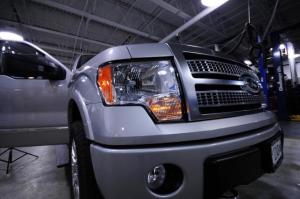When most of us think of ongoing vehicle maintenance, we tend to only focus on oil changes, wipers or wiper fluid, or tire air pressure. While these are important to check regularly, there are some other important maintenance items that are often overlooked and neglected by vehicle owners.
The five most commonly overlooked items are below with some explanation on the risk of not addressing them, signs that you may have a problem, and what can be done to ensure proper maintenance is completed.
| What’s the Risk? | Early Warning Signs | What Should You Do? | |
| Power Steering |
Power steering fluid is the hydraulic fluid that transmits power in your vehicle’s power steering. Over time, power steering fluid may get dirty and could easily clog the components of your steering system. |
|
If you think your power steering fluid might be low, have it checked by a professional who can determine if fluid needs to be added, or there’s a possible leak in your power steering rack. |
| Wheel Alignment |
Alignment refers to your vehicle’s suspension and its connection to your wheels. Pot holes or bumpy roads can throw your wheel alignment off, resulting in quicker wearing of your tires. |
|
Check your tires for any uneven or excessive wear. You should have your wheels aligned at least once a year. |
| Transmission Fluid and Filter | While newer vehicles have reliable transmissions, it is still possible to have issues with your fluid or filter. Transmission fluid can become dirty with particles over time and clog your transmission filter. Or, your transmission fluid could have a leak, leading to further complications with your vehicle’s transmission. |
|
Stick to your vehicle’s maintenance schedule for changing transmission filters or fluid. If you have a burning smell or smoke, get it into a repair shop as soon as possible. |
| Timing Belt | The timing belt is an important part of your crankshaft system that helps open and close the vehicle valves during operation. Typically, a timing belt will break and cause major damage to your engine. Belts break as a result of wear and/or cracking. |
|
Stick to your vehicle’s maintenance schedule for replacing a timing belt. If you notice any of the signs, get it into a repair shop as soon as possible, otherwise, you may risk engine failure. |
| Cooling System | Your engine’s cooling system is what keeps the vehicle from overheating during use. Sometimes coolant can become clogged, which then affects your radiator and the ability to cool the engine. Coolant may also leak, which could lead to engine corrosion and further complications with your engine’s health. |
|
Replacing coolant may only be a temporary fix to prevent the vehicle from overhearing. If you have any issues with leaking coolant or overheating, get your vehicle into a repair shop as soon as possible. |
Remember, having a safe and efficiently working vehicle takes ongoing maintenance. Stay alert to the signs that your vehicle’s engine might be telling you to take action. Get in touch with a service technician today at Campus Repair, Fort Collins, Colorado, if you would like us to review your vehicle for any of these five maintenance issues.

